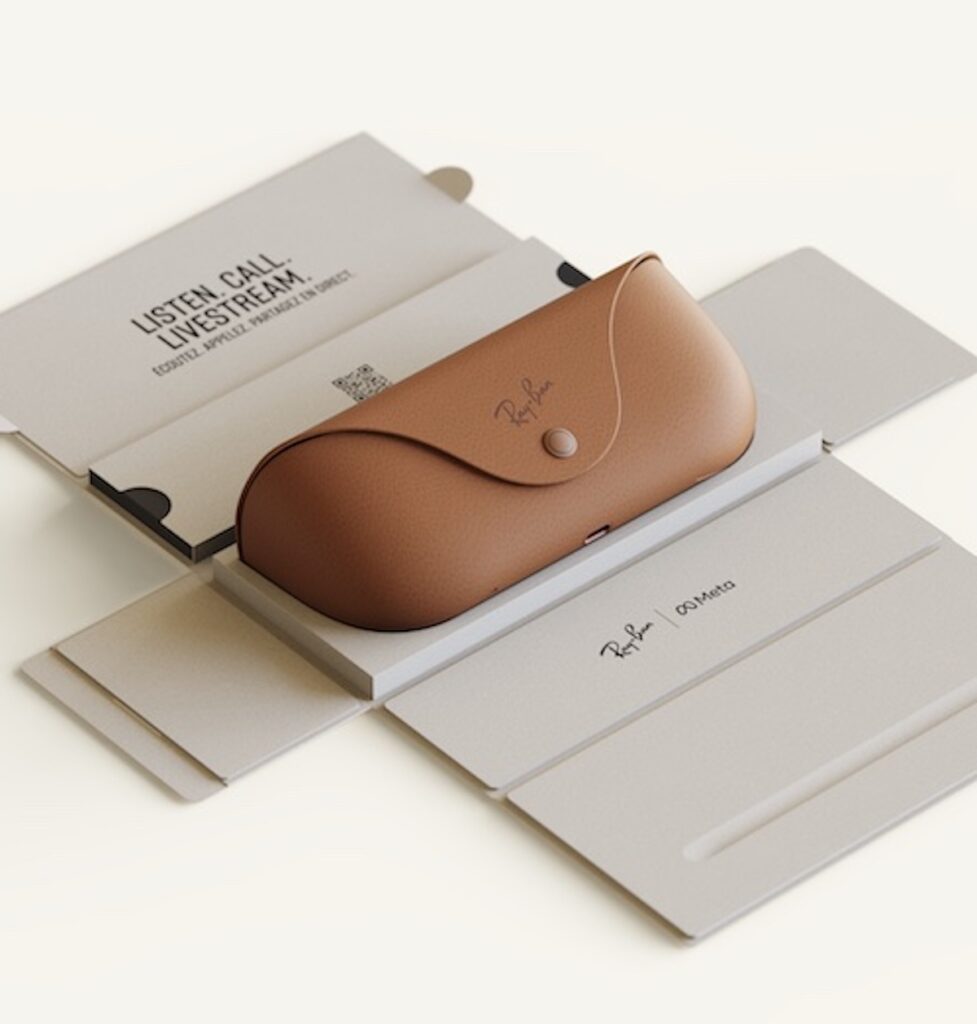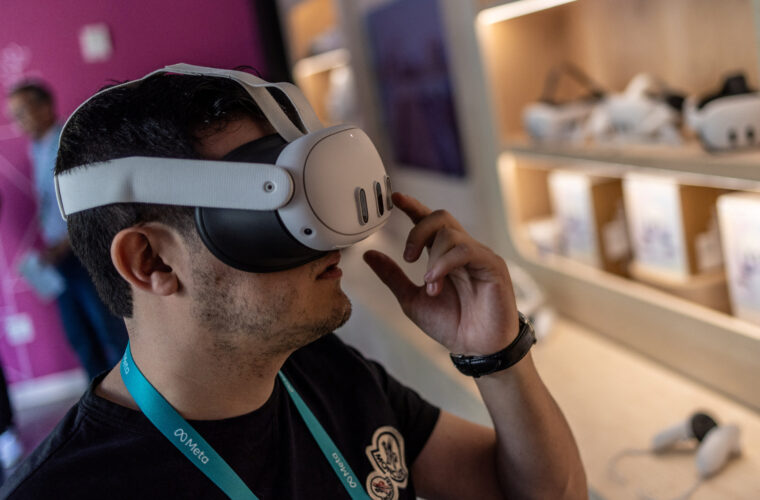If there is one constant rule in consumer technology, it is that the second generation of a new product category is always better than the first. The second iPhone offered faster network connectivity and a GPS module, the second Galaxy Fold made the original look like a toy, and so it is with the Ray-Ban Meta, the smart glasses produced by the American giant together with EssilorLuxottica. Compared to the first release, there is a substantial upgrade in cameras, battery life, and artificial intelligence features.
Design and hardware
Let’s start by saying that there are two variants of Ray-Ban Meta: Wayfarer and Headliner. Either way, it feels like a traditional pair of Ray-Bans, albeit with a slightly thicker frame. The front houses a 12-megapixel camera capable of taking photos with a resolution of 3024 x 4032 and 1080p video at 30 fps. The camera is located on the left side and is small enough not to be noticed by most people unless they are a few centimetres away from the face of the person wearing the ‘smart glasses’. On the right side, in the same position, is an LED indicator, which lights up whenever the cameras are used.
The light is brighter and more extensive than with the first-generation glasses, which addresses one of the concerns of the European privacy regulator: the glasses must not be misused to film people without their consent. The light flashes during video recording to attract attention, which is a good preventive measure against surreptitious filming, although, of course, it cannot be used to prevent surreptitious capture. There is also a proximity sensor around the LED to prevent the camera from being activated if covered with a hand or, for example, tape.
Inside the frame are five microphones that do an excellent job of recognizing voices, even in noisy environments. The glasses have two loudspeakers at the bottom of each rod, positioned above the wearer’s ears. The sound quality is good for voices (be it a podcast, a phone call, or the AI assistant). Songs can be listened to from streaming apps, the phone’s memory or the glasses’ internal memory, which is 32 gigabytes. The glasses come in a case that doubles as a charging base. This is done via magnetic pins while the back connects to the power supply via the USB-C port.
Software and functionality
To use the glasses, you need to download the Meta View app for iOS and Android, along with a Facebook or Instagram account. When switched on, an entry informs the user about the phone’s battery level and connection status. Once connected, the glasses can be a wireless earpiece for audio and phone calls (also via app) and a camera for photo and video capture. Content can also be captured by saying, ‘Hey Meta, take a picture’. Videos have a maximum length of 60 seconds and are recorded vertically. Perspective allows you to take hands-free photos and videos with the exact perspective of your eyes.

AI and the Metaverse
Only in the US, at least for the time being, the Ray-Ban Meta integrates the voice assistant, Meta AI, designed to answer even complicated questions such as ‘what do I need to bake a cake?’ and thus come up with a list of ingredients. Moreover, Meta has recently expanded its participation in the Meta View beta program, with which it is also possible to harness artificial intelligence to make it ‘read’ the world around it and thus get descriptions of famous places or monuments around, either as a voice response or descriptive in the app on the smartphone. The intention is to expand AI to more markets within the year.
This is fully in line with Meta’s vision of the future of connectivity, which, since its rebrand several years ago, has focused on the metaverse and its related fields. The glasses and the Quest visors are just some of the ways in which the giant intends to enhance people’s digital opportunities, extending users’ presence across various platforms and making them interoperable and integrated.
The AI upgrade of the glasses and then a consolidation of what the consumer technology market has been highlighting in recent times: more than the hardware, it is the software that counts, given the opportunity to take advantage of the cloud to access additional services, without having to periodically change one’s device. This will allow a 3D layer of useful, contextually relevant information to be added to the physical world. Meta owns Facebook and WhatsApp, so the Ray-Ban Meta works well with both apps: if we receive a message, the AI assistant can read it and transcribe our response if necessary.
Final considerations
Unlike the previous generation, the Ray-Ban Meta looks to a wider audience. Not only to lovers of technology and innovation in the strict sense, but to anyone who wants to wear an object that is the bearer of the future but with an appearance that is not extravagant, indeed minimalist. From a distance, it is difficult to distinguish the connected version from a pair of ‘normal’ Ray-Bans, and that is a plus. Of course, the price is no small matter: it starts at 329 euros and goes up to 409 euros, to which the cost of any prescription lenses must be added. The advantages, compared to traditional glasses, are many: from being able to leave the earphones at home to being untethered, as far as possible, from the phone screen.



